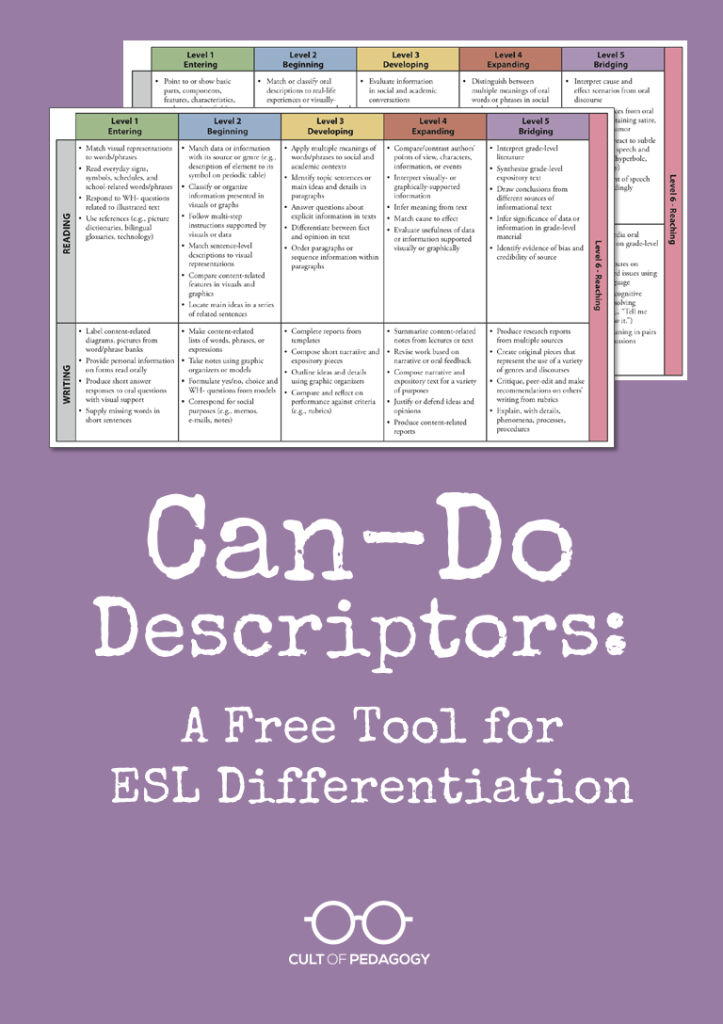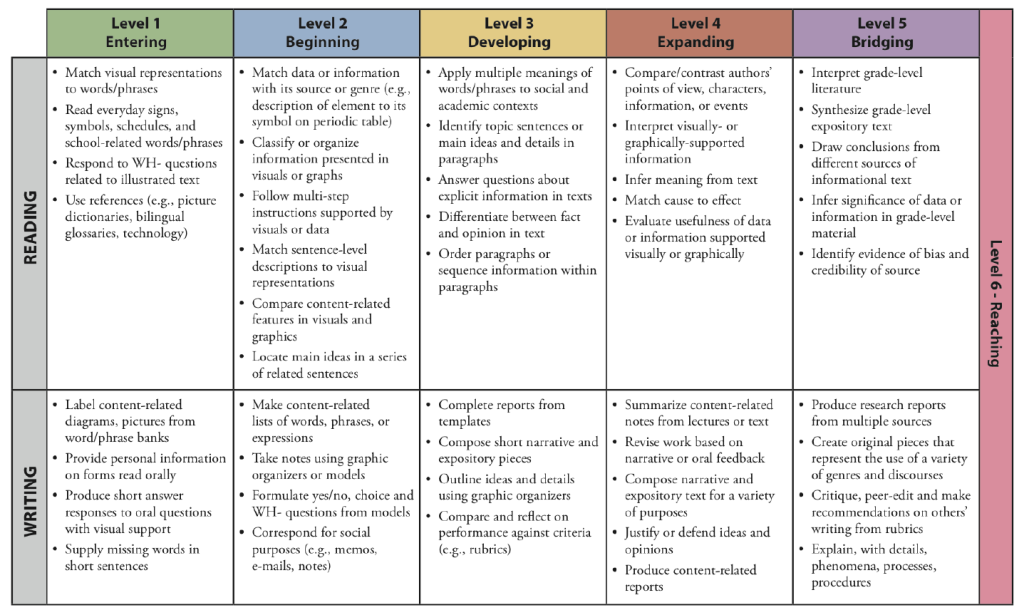Can-Do Descriptors: A Free Tool for ESL Differentiation

Every year, in classrooms all over the country, the population of English language learners continues to grow. Depending on where you live and how far along your school’s ESL program is, you may have to figure out how to help non-English speaking students participate in your class, even if you have no ESL training yourself.
Sadly, many teachers in this situation will just have these students sit there, watching as their classmates engage in learning activities. Or we might give students a coloring page, just so they have something to do with their hands. It’s not even close to ideal—we know this—but with no other tools at our disposal, what else is there?
In an earlier post, I shared 12 strategies regular classroom teachers can use to support ESL students in their classrooms. If you haven’t read that, definitely check it out. Since then, I have been shown one more tool that can make a huge difference for these students: the Can-Do Descriptors, downloadable for free from an organization called WIDA.
These descriptors are designed to help classroom teachers understand what students at different levels of English proficiency should be able to do in a regular content area classroom. The tasks are separated into four domains: reading, writing, speaking, and listening. The descriptors can help you look at an activity you plan to do with your English-speaking students, then scale it back for ELL students so that they are still interacting with the academic content, just at a simplified level.
How the Can-Do Descriptors Work
Let’s walk through an example so you can see the Can-Do charts in action. Take a look at this page of descriptors for grades 9-12:

Suppose you want students to write research reports that integrate information from a variety of sources. If you look at the “Writing” row on the chart above, you’ll see that this activity is listed as something a Level 5 student should be able to do. Let’s assume you have three ELL students in your class: Seda, who speaks almost no English (Level 1), Pavlo, whose English is progressing, but still hasn’t reached proficiency (Level 3), and Ife, who is approaching fluency (Level 5).
Ife can most likely do the research report as assigned (see the top bullet in “Writing” under Level 5). She may need a bit of help with some of the vocabulary, but at level 5, her proficiency is strong enough to do the same work as her English-speaking peers. Pavlo, at Level 3, could be given a template or graphic organizer that asks for specific information about his chosen topic. In order to complete this template, he will still need to do research, but he won’t need to rely on the advanced English skills required to compose a well-written report. Meanwhile, Seda may only be able to label pictures of items related to a topic similar to those students are researching. If all students are researching careers, for example, you might find out what types of jobs Seda is interested in, have her choose one, then give her pictures related to that job to look up and label.
Here’s another example from 3rd-grade teacher Kelsey Davis, using the grades 3-5 descriptors:
What If You Don’t Have Access Scores?
The levels in these charts are based on student scores on the ACCESS test, which is given in many states to measure English language proficiency. If your state doesn’t use this test, if you are outside of the U.S., or if you are working with a student who hasn’t been tested yet, use these charts as a guideline: The point is to use the descriptors to challenge each student as much as possible within their current language abilities, so make your best guess about what the student might be able to do, try it, and adjust as necessary.
It sure beats having them sit and color. ♦
Download a Free Copy of the WIDA Can-Do Descriptors for your target age group HERE. And check back later: WIDA is currently working on additional versions of the descriptors, including a set in Spanish.